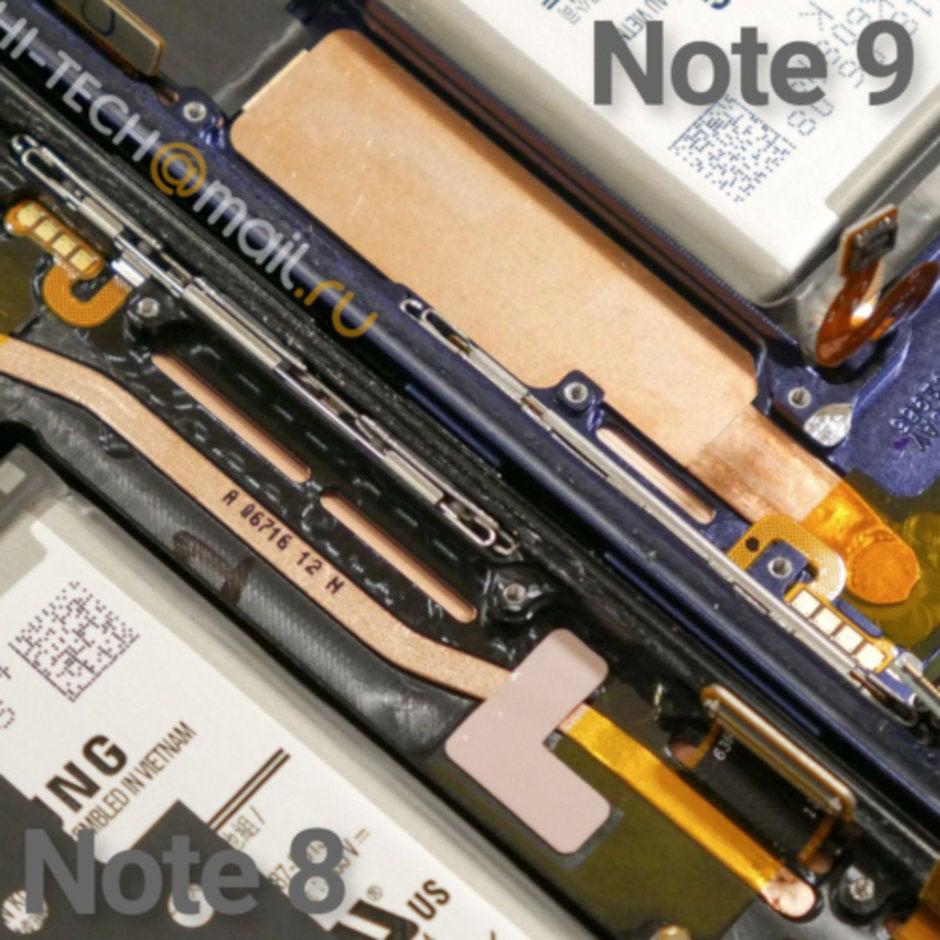Stop calling Note 9's heat dissipation a 'liquid cooling' system

Galaxy Note9: Water Carbon Cooling system from samsungmobilepress on Vimeo.
Way back when the Galaxy S7 and S7 edge were announced, the first teardowns of the handsets revealed some sort of a thin flat heat pipe running away from the processor area, presumably a cooling effort. The same ones were spotted before on Sony's high-end Xperias, starting with the Z2, or even the Lumia 950XL.

Note 9 vs Note 8 cooling systems
The tiny amount of water is weaved around the CPU/GPU combo to take away the heat that the Exynos and Snapdragon chipsets would generate under, say, gaming stress. The drop evaporates when it hits the chipset area, lowers the temperature there, then condenses back to run down the metal mesh inside and repeat the process, spreading the heat in a more equal manner.
So, thermal spreader, vapor chamber, heatsink, call the system's elements what you will, but tests show that it is only slightly more efficient than what we already have on, say, the Note 8. On hot summer days, it performs much better than phones without, though. In a recent Tom's Guide test, the Note 9 and Note 8 lasted more minutes of sunlight gaming than the iPhone X before overheating, for instance. Still, the heat dissipation system inside the Note 9 is not as fancy as a "liquid cooling" moniker would lead us to believe.
images: Hi-tech
Follow us on Google News










Things that are NOT allowed:
To help keep our community safe and free from spam, we apply temporary limits to newly created accounts: